#erdély mátyás
Explore tagged Tumblr posts
Text
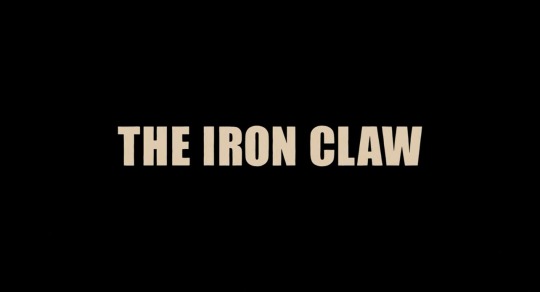



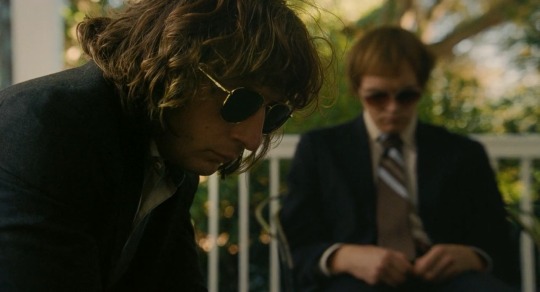


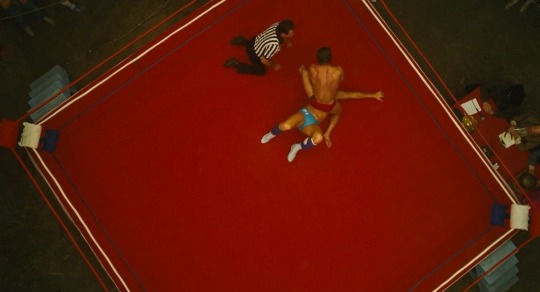
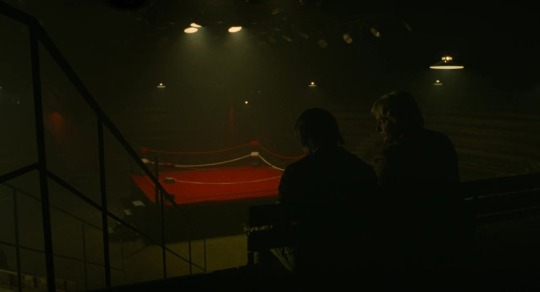

The Iron Claw (2023)
Director - Sean Durkin, Cinematography - Mátyás Erdély
"I used to be a brother."
#scenesandscreens#the iron claw#sean durkin#Mátyás Erdély#zac efron#kevin von erich#jeremy allen white#kerry von erich#harris dickinson#david von erich#maura tierney#stanley simons#Michael J. Harney#holt mccallany#lily james#Maxwell Friedman#Cazzey Louis Cereghino#aaron dean eisenberg#Kevin Anton#Chavo Guerrero Jr.#ryan nemeth#scott innes
125 notes
·
View notes
Text

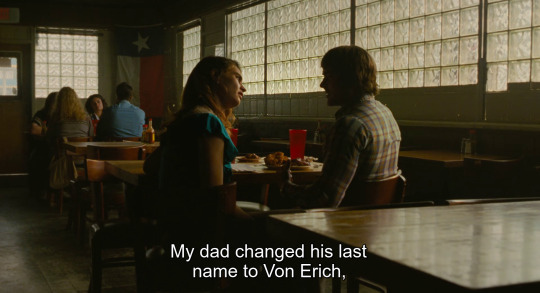





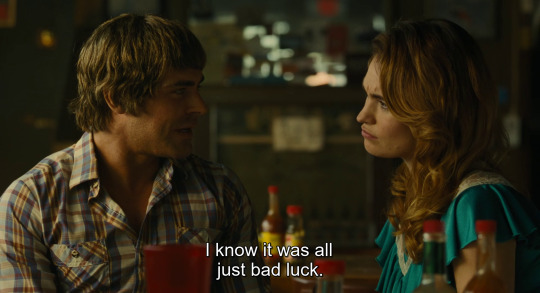



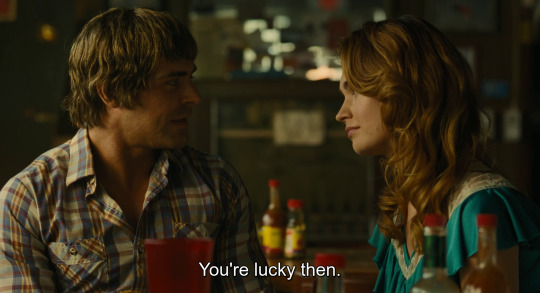
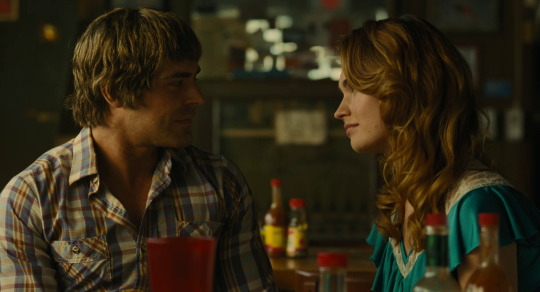

The Iron Claw (Sean Durkin, 2023).
18 notes
·
View notes
Text

. Ever since I was a child, people said my family was cursed. Mom tried to protect us with God. Dad tried to protect us with wrestling. He said if we were the toughest, the strongest, nothing could ever hurt us. I believed him. We all did.
The Iron Claw, Sean Durkin (2023)
#Sean Durkin#Zac Efron#Jeremy Allen White#Harris Dickinson#Stanley Simons#Holt McCallany#Maura Tierney#Lily James#Michael Harney#Kevin Anton#Chavo Guerrero Jr.#Aaron Dean Eisenberg#Mátyás Erdély#Richard Reed Parry#Matthew Hannam
4 notes
·
View notes
Text
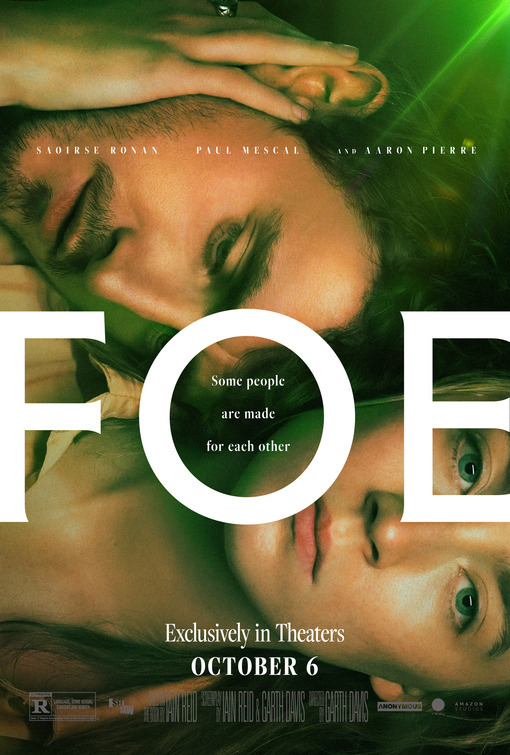
Films of 2023: Foe (dir. Garth Davis)
Grade: C-
Mátyás Erdély is that girl but yiiiiIIIIIiiiiikes.
#films of 2023#foe#Garth Davis#saoirse ronan#paul mescal#aaron pierre#matyas erdely#iain reid#25 minutes left after the big reveal…come on
3 notes
·
View notes
Photo

Géza Röhrig and Amitai Kedar in Son of Saul (László Nemes, 2015)
Cast: Géza Röhrig. Levente Molnár, Urs Rechn, Sándor Zsoter, Marcin Czernik, Uwe Lauer, Christian Hartin, Mihály Kormos, Amitai Kedar. Screenplay: László Nemes, Clara Royer. Cinematography: Mátyás Erdély. Production design: László Rajk. Film editing: Matthieu Taponier. Music: László Melis.
Son of Saul begins with an out-of-focus figure walking across a field toward the camera until he finally comes into focus. This is Saul Ausländer (Géza Röhrig), a Sonderkommando -- a Jewish prisoner tasked with clean-up duties in a Nazi death camp. In a bravura sequence, the camera stays focused on Saul in near-closeup as it tracks what he is doing: helping herd naked people into the "showers" where they are gassed, rifling through their belongings that they have neatly hung up in an anteroom (they were, in a particularly sadistic stroke, told to remember the numbers of the hooks on which they hung their clothes and to hurry their showers because the promised soup is getting cold), then helping take the bodies (referred to by the Nazis as "die Stücke," or "pieces") to the crematorium, and scrubbing the floors in the gas chamber. It's a sequence made more horrifying by the fact that all of these events take place in the slightly out-of-focus background as the camera concentrates on Saul. But something out of the ordinary happens: A boy is found still alive in the gas chamber, and Saul recognizes him. He will later tell others that the boy is his son, from a liaison with a woman not his wife, which explains the unusual interest he takes in this particular victim: When the boy is sent to the doctors, he is smothered to death by an SS officer who then orders an autopsy to try to explain why he survived the gas. Saul, who witnesses this murder, persuades a sympathetic doctor to hold off on the autopsy and keep the body from being cremated. Saul's efforts to hide the body and to find a rabbi who can perform a ritual burial form the rest of the film's narrative. He is aided in his efforts but sometimes also resisted by other prisoners, who are plotting a rebellion against the guards. It's an extraordinarily harrowing film that won the foreign language film Oscar and numerous critics society awards. Remarkably, it's also writer-director László Nemes's first feature film, and Röhrig, on whom the camera is focused for virtually the entire time, had only a Hungarian TV miniseries made in 1989 as an acting credit. Like many films about the Holocaust it runs the risk of turning its subject into melodrama or of desensitizing the audience to the depicted horrors. It doesn't quite avoid the risk -- there are times when Saul's implacable determination tests our credulity, and there is always the awareness that these are "just actors" portraying things that happened to real people -- but it's an honorable contribution to a difficult genre.
2 notes
·
View notes
Text
Iron Claw (2023) - Review
Director: Sean Durkin | 2h 12mins | Drama, Biography, Sport
The true story of the Von Erich family who had a meteoric rise in the world of professional wrestling during the 1980’s.
There have been very few films based on pro wrestling and even fewer true stories. Fighting With My Family is the most notable one to date in which we were given a lighter approach to the illusive and secretive world that has so many fans. It’s actually quite shocking considering the amount of tragedy and controversy the industry has produced throughout its history, but the story of the Von Erich brothers is one of the more heartbreaking stories there is, something that director Sean Durkin is eager to explore in The Iron Claw.
The film takes place across a number of years and follows the meteoric rise of Kevin, Kerry, David and Mike as well as their fathers no-tears approach to success and eventually, loss. As a true story it’s overwhelming just how much pain one family can suffer, but the script by Durkin challenges toxic masculinity and the pressure of living up to parental expectations – making it far more than your average tear-jerker. Instead of showing us tragedy after tragedy there is a distinct exploration of old-fashioned attitudes and the emotional toll they can take even on the strongest family units.

The bond between the four brothers is instant, even through all the rough-housing and sibling squabbles there are heaps of compassion coming from each one of them. It’s down to the great casting, Zac Efron, Jeremy Allen White, Harris Dickinson and Stanley Simon all fit the physical and psychological mould of their characters. Despite such a rigorous upbringing by their ruthless Farther and somewhat ignorant Mother, they still find love and empathy towards each other – creating a bond that only heightens the real-life tragedy being portrayed.
Durkin’s previous film The Nest was similarly full of great performances, but while that film softly captured its tension and mood effortlessly, the one thing The Iron Claw lacks is a little subtlety. It has to be said that there are glimmers of brilliance that Durkin offers us, whether it be the simple spillage of blood or the slight shift in movement to reveal the true gravity of a situation, but in its overarching story of toxic masculinity it struggles to find a way to say “it’s ok to cry” without any words at all. Even in spite of this though, you have to commend Zac Efron for his valiant performance as the eldest brother Kevin Von Erich.

The physical criteria has never been an issue for Efron, who’s physique is just as impressive as most professional wrestlers, but his ability to wear his heart on his sleeve while never actually showing any signs of emotion is one of the films biggest triumphs. It’s certainly a career best for the star and if anyone needs any more proof of his acting ability you may look no further.
As for the wrestling itself, in which the families life was constantly entwined, cinematographer Mátyás Erdély eloquently captures the heavy-lit ring with fantastic composure. It instantly reminds you of the great work done in Aronofsky’s The Wrestler, not just capturing a sport but the people who are truly sacrificing it all to be there.
Fans of pro wrestling will be salivating at the idea of tearing this film apart for inconsistencies, but as a cinematic narrative it’s handled with great depth and delicacy. Even if its themes hit you over the head harder than a stiff chair shot, there is a hope we will get to see more fascinating stories of this industry told with The Iron Claw’s level of creativity.
4/5
1 note
·
View note
Text
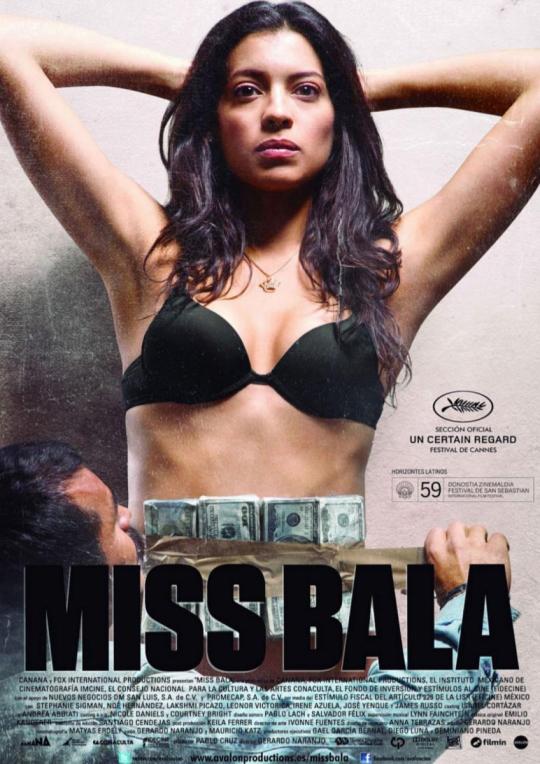
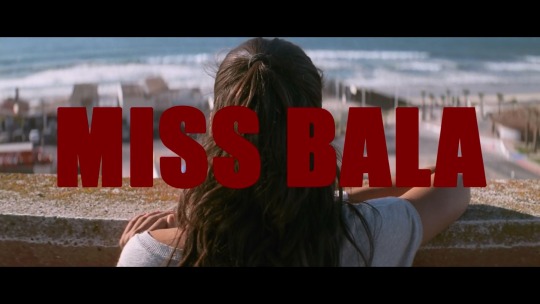
CALIFICACIÓN PERSONAL: 8 / 10
Título Original: Miss Bala
Año: 2011
Duración: 113 min
País: México
Dirección: Gerardo Naranjo
Guion: Gerardo Naranjo, Mauricio Katz
Música: Emilio Kauderer
Fotografía: Mátyás Erdély
Reparto: Stephanie Sigman, Noé Hernández, Irene Azuela, James Russo, Lakshmi Picazo, Juan Carlos Galván, Jose Yenque, Leonor Victorica, Miguel Couturier
Productora: Coproducción México-Estados Unidos; Canana Films, Fox International Productions, IMCINE, Conaculta, Fidecine, Promecap
Género: Crime; Drama; Action
TRAILER:
youtube
0 notes
Text
Crítica de ‘The Iron Claw’ – Zac Efron surpreende no drama de wrestling
Review/crítica da Discussing Film, por James Preston Poole.
Apesar de toda a glória do wrestling profissional, uma onda de tragédia lança uma longa sombra. A morte e o crime horrível cometido por Chris Benoit e o acidente que tirou a vida de Owen Hart são apenas dois exemplos num mar de manchetes sombrias. A Vice até fez o seu próprio programa de TV sobre esse aspecto do wrestling, The Dark Side of the Ring. Destas histórias, a história da família Von Erich, cinco irm��os, tempo e tragédia reduzidos a um, deixa um impacto duradouro. Trazer os Von Erichs para a tela grande exige muito tato. É um alívio, então, que The Iron Claw, de A24 e do escritor e diretor Sean Durkin, retransmita a verdadeira história da “Maldição de Von Erich” com grande respeito. Impulsionado por performances transformadoras do seu elenco, The Iron Claw é uma meditação comovente sobre o amor e a fraternidade que permanecerá com o público muito depois de os créditos terem rolado.
Zac Efron estrela como Kevin Von Erich, um dos quatro irmãos em Dallas, Texas, criados pelo seu pai/treinador Fritz Von Erich (Holt McCallany) para serem lutadores famosos. Ao longo do início da década de 1980, Kevin, Kerry (Jeremy Allen White), David (Harris Dickinson) e Mike (Stanley Simons) passaram a dominar o desporto. Kevin conhece o amor da sua vida em Pam Adkisson (Lily James), e o seu relacionamento com os seus irmãos fica mais forte do que nunca. Infelizmente, uma grande tragédia transforma os quatro irmãos em três, desencadeando uma cadeia de eventos que gradualmente transformará o legado triunfante dos Von Erichs de heróis americanos em algo muito mais sombrio. Enquanto o domínio de ferro do seu pai impede a cura necessária, Kevin tenta aguentar enquanto a sua família fica fora de controlo.
Agora, o leitor perspicaz provavelmente notou que anteriormente foi afirmado que havia cinco irmãos Von Erich e o resumo afirmava que havia quatro. Isso não é um erro. Por uma questão de tempo de execução, o membro mais jovem da família, Chris Von Erich, é totalmente eliminado. Decisões como essas podem afundar um filme e exigir a ética de tal projeto. Felizmente, The Iron Claw presta grande respeito, embora não sem intensidade, aos Von Erichs que retrata. Para dar um passo adiante, o primeiro ato parece quase uma carta de amor à força dos irmãos como unidade familiar. O diretor de fotografia Mátyás Erdély captura-os no seu auge numa montagem ambientada em “Tom Sawyer” de Rush, que os enquadra como ícones, sem ter para onde ir além de subir.
Que fique claro, porém, que mesmo desde o início, The Iron Claw não foge da realidade brutal da situação. Sean Durkin e Holt McCallany não retratam o pai dos rapazes, Fritz, como um homem aparentemente cruel, mas deixam explicitamente claro o nível de controlo que ele tem sobre os seus filhos. O desempenho dolorosamente autêntico de McCallany faz com que ele assuma o papel de treinador, comandando os irmãos como uma equipa que ele precisa de moldar, em vez de um pai amoroso. No início do filme, Kevin vai até à sua mãe Doris (Maura Tierney) e mostra preocupação com o quão durão Fritz é, apenas para ela dizer “é para isso que servem os teus irmãos”. E, como Durkin mostra vividamente, eles eram um sistema de apoio vital um para o outro.
Os irmãos Von Erich são personagens imensamente simpáticos desde o início. David é a estrela natural do grupo, Kerry extremamente confiável, Mike, o artista sensível, e Kevin, bem... Kevin é a cola que os mantém todos juntos. É uma alegria simplesmente vê-los interagir de várias maneiras, como quando os três irmãos vão apoiar Mike num concerto em que ele está a apresentar-se. Tu esqueces, ao ver o filme, que os Von Erichs estão condenados desde os logotipos de abertura porque Durkin e o elenco fazem um ótimo trabalho em tornar te querido por esses rapazes… o que torna o golpe inevitável ainda mais difícil.
Assim que o primeiro Von Erich morre, The Iron Claw atua como uma espécie de acidente de carro cinematográfico em câmara lenta. Ver como os irmãos lidam com a tragédia é de onde vem grande parte da emoção potente. Como novato, o ator Stanley Simons assume muito na sua atuação. Ele faz cara de corajoso e tenta participar do legado da família, mas simplesmente não tem coragem para isso. Uma certa transformação que acontece com Mike exige muita expressão física de Simons. Em ação, é angustiante. Enquanto isso, a estrela de The Bear, Jeremy Allen White, chama a atenção positivamente como um atleta que já foi bem organizado e agora está a desmoronar, ficando furioso e negando o que está a acontecer com a sua família.
Aquele que realmente mantém The Iron Claw à tona em todos os momentos é Zac Efron na performance mais poderosa da sua carreira até agora. Desde o início do filme, o seu intenso amor pelos irmãos fica evidente. É tudo o que ele fala quando conhece Pam, de Lily James. Isso beira a ingenuidade, o seu simples rapaz texano de olhos arregalados, despreparado para a tempestade que está prestes a cair. The Iron Claw vê Kevin de Efron a tentar aguentar com todas as suas forças, tentando manter uma família unida que está fraturada sem possibilidade de reparo. Efron praticamente exige empatia enquanto a tentativa de suprimir todas as emoções possíveis passa pelo seu rosto. Particularmente atraente é o seu relacionamento com Fritz, que de certa forma reflete Whiplash, com a figura do mentor levando o seu aluno além dos seus limites. Só que isso vem com um tipo de estímulo mais reconhecível, em vez do vilão absoluto de J.K. Simmons e em vez de perder amizades, Kevin perde a chance de sofrer.
O cineasta Sean Durkin retrata Kevin como um ser humano preso num pesadelo do qual não consegue acordar. Kevin costuma ser mantido a uma grande distância do espectador em planos abertos, dando a impressão de estar no centro de uma tempestade que parece não parar tão cedo. Sem dúvida, The Iron Claw é uma situação difícil. Às vezes, pode muito bem ser uma marcha da morte, embora altamente convincente. No entanto, faz uma escolha ousada durante o desfecho para permitir a entrada de alguma luz. No final, porém, Durkin e Zac Efron mostram que a cura está próxima. As cicatrizes sempre estarão lá e não será fácil, mas os Von Erichs sobreviventes perseverarão. Um momento simples, onde Efron, em lágrimas, diz aos seus filhos que estão a perguntar-se por que ele fica tão emocionado ao vê-los brincar “Eu costumava ser um irmão” diz tudo.
The Iron Claw será muitas coisas diferentes para muitas pessoas diferentes. Para os fãs de wrestling, será uma cinebiografia necessária de uma família lendária no desporto, com autenticidade reforçada pelo envolvimento de nomes como Chavo Guerrero Jr., Maxwell John Friedman e até mesmo pelo endosso do vivo Kevin Von Erich. Para os especialistas em prémios, é uma excelente vitrine de conjuntos. Acima de tudo, porém, é uma história sobre o impacto que a família pode ter sobre ti, o buraco profundo em que a perda deles pode deixar-te e o início da longa jornada para sair desse buraco. The Iron Claw é um drama humano requintado, puro e simples.
Avaliação: 4,5 de 5.
0 notes
Text
my dad really likes this dracula daily stuff because he's been a huge fan of bram stoker's dracula since high school and i'll tell him what's happening in dracula daily and we can talk about the book and the theories and discussion i read here
on another note i was telling him and my mom (transylvanian) that the book is so old our ethnic group doesn't exist and he thought that was the coolest thing
#dracula daily#basically my ethnic group DID exist in transylvania#they just weren't differentiated from the magyars because there was nothing TO differentiate#magyars are hungarians (magyar is hungarian for hungarian)#more specifically they're hungarians who live in hungary#because transylvania was actually hungarian until 1920#however after 1920 transylvania was given to romania#and so the isolation from other hungarians and the persecution from the romanian government#created the erdély!#dracula in the book is actually hungarian btw#székely specifically#székely are far more separated from hungary than erdély#living in the center of romania#and have been for far longer#they are. weird. not as weird as the csángós in moldavia (which is currently split in half by moldova and romania)#i have a székely family friend he's fun to talk to but. definitely weird#vlad tepes (i'm sorry i don't have the accents) who dracula is supposed to be is actually romanian tho#WAIT HIS DAD WAS MURDERED BY MÁTYÁS KIRÁLY'S DAD????#anyway. i don't live in romania and never have but my family's Heavily from the area
56 notes
·
View notes
Photo
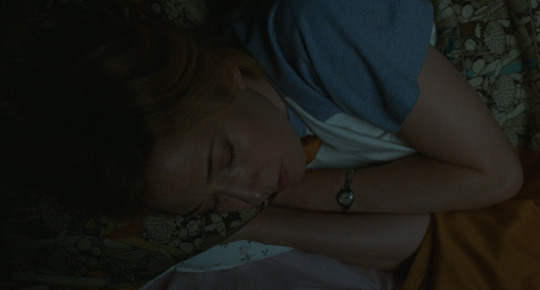
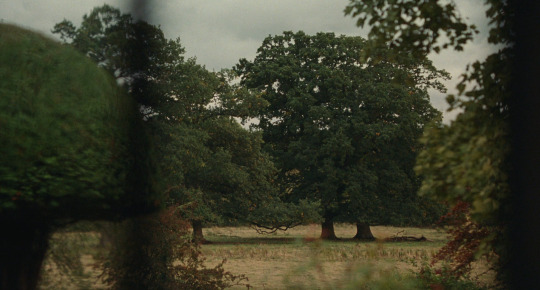

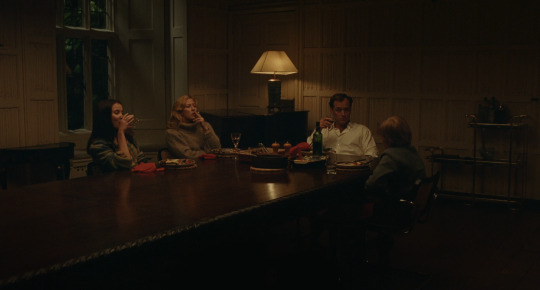

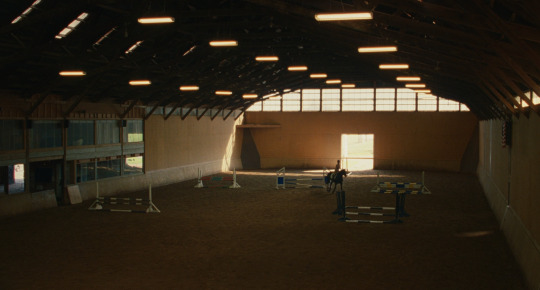
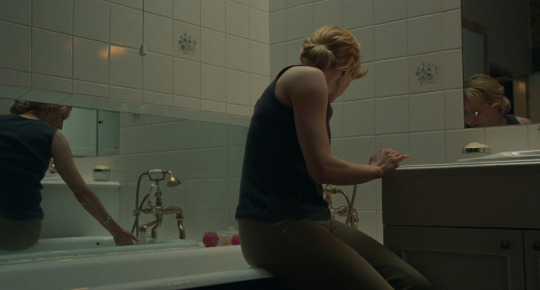
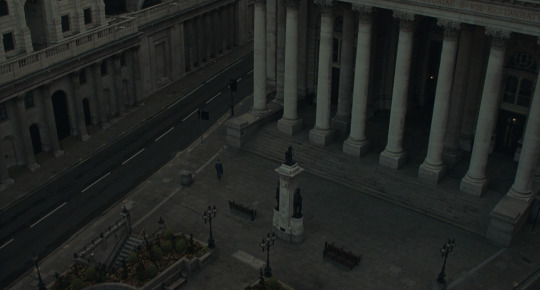

the nest (sean durkin, 2020)
45 notes
·
View notes
Text
Hetedik a hetvenediken | Mundruczó Kornél és Cannes

.
A 70. Cannes-i Nemzetközi Filmfesztiválon debütál Mundruczó Kornél legújabb filmje, az Arany Pálmáért ringbe szálló Jupiter holdja. A rendező hetedik alkalommal szerepel a fesztiválon, ahol már díjakkal is hozzájárult a magyar film nemzetközi elismertségének növeléséhez. A premier kapcsán végignéztük Mundruczó eddigi pályafutását a világ filmművészetének legrangosabb szemléjén.
In: Filmhu, 2017. május 19.
Mundruczót először 2003-ban invitálták Cannes-ba, a meghívott film a 2000-es évek elején induló új raj filmesei által (és Jancsó Miklós konzulensi részvételével) összerakott Jött egy busz… című szkeccsfilmben szereplő munkája, A 78-as szent Johannája volt. A már akkor tervezett, egész estés operafilm előtanulmányaként is szolgáló kisfilm ekkor még nem versenyszekció, hanem a fesztivállal párhuzamosan zajló esemény, a Rendezők Kéthete elnevezésű program műsorát gazdagította.

.
A közlekedési balesetek modellezésében résztvevő önkéntesekről szóló opera-kisjátékfilm három vetítése komoly sikereket hozott a rendezőnek, Mundruczó munkája több fesztiválmeghívást is kapott. Érdekesség, hogy szintén a Rendezők Kéthetében mutatkozott be évtizedekkel korábban a Mundruczót pályafutása során bevallottan nagyban inspiráló Rainer Werner Fassbinder.
Egy évvel később Mundruczó (és alkotótársa, Petrányi Viktória) diplomafilmje, a Kis apokrif no. 2 vehetett részt Cannes-ban, ráadásul már a Cinéfondation szekcióban, a fesztivál kezdő filmkészítők inspirálására és támogatására létrehozott versenyblokkjában. A Duna-delta torkolatvidékén játszódó, bő 20 perces kisfilm a 78-as Szent Johannájához hasonlóan szintén előtanulmány: Mundruczónak akkoriban két nagyjátékfilmterve is volt, egyrészt a fentebb említett operafilm, másrészt a Delta, egy teljesen egyedi megközelítésű, (akkor még) sci-finek tervezett mozi, amely a Duna deltatorkolatának világában játszódó hazatérés-történetet szeretett volna ábrázolni.

.
A fentebb említett munkák ugyan nem jelentettek automatikus részvételt a 2005-��s mustrán, a program összeállítói viszont - minden bizonnyal az elmúlt két év pozitív visszhangjainak köszönhetően - mégis meghívták az akkorra elkészült egész estés operafilmet, a Johannát, ráadásul az Un Certain Regard, a fiatal, vagy kevésbé ismert filmrendezők munkáit tömörítő versenyszekció programjába.
Jeanne D’Arc klasszikus történetét egyrészt egy kortárs környezetben, másrészt operafilmként úgy elmesélni, hogy az hű maradjon az eredetihez, harmadrészt belekeverni a sztoriba a függőség témakörét és egy jó adag szexualitást, olyan feladat (és ötlet), amibe csak kevesen kezdenének bele, mindenesetre a Johanna nagyot szólt Cannes-ban, a főszereplő Tóth Orsi teljesítményéről pedig még a Hollywood Reporter kritikusa is ezt írta: „Tóth Orsi emlékezetes alakítást nyújt Johanna szerepében, remekül ragadja meg a hősnő könyörtelen elszántságát a jó ügy szolgálatában. A film valódi felfedezés a Cannes-i Filmfesztiválon.”

.
A Johannnával tehát Mundruczó tovább gyűjtötte az elismerő véleményeket, így egyáltalán nem volt meglepő, hogy a 2008-ra elkészült Delta már az Arany Pálmáért szállhatott harcba. A díjat ugyan nem sikerült elhozni, jóllehet, Erdély Mátyás, a Saul fia operatőre által komponált képekből összeállt munka sokak tetszését elnyerte a Riviérán.
A Delta forgatását ezzel együtt koromsötéten árnyékolta be a férfi főszereplőnek szánt Bertók Lajos tragikus hirtelenséggel, a forgatás közben bekövetkezett halála, akinek a helyét - nagyjából egy ország meglepetésére - a hegedűvirtuóz, zéró filmes tapasztalattal rendelkező Lajkó Félix vette át. Lajkó kiváló partnere lett a filmben a húgát játszó Tóth Orsinak. A történeten, a rendezésen vagy a bemutatott világon túl elsősorban az ő párosuknak köszönhető a korábban egymást nem ismerő testvérek közötti kötődés mélységét feszegető, vagy a messziről jött ember fogadtatását nem túl pozitív fényben feltüntető történet sikere.

.
A soron következő film, a Mary Shelley szabad adaptációján nyugvó, 2010-ben bemutatott Szelíd teremtés - A Frankenstein terv itthon talán nem ütött akkorát, a Cannes-i versenyprogramba való meghívó viszont megérkezett, ráadásul ezúttal is az Arany Pálmáért folyó főversenybe. A Szelíd teremtés film a filmben, az ábrázolt történeten keresztül képet kaphatunk egy (valószínűsíthetően Mundruczó-) forgatás körülményeiről, miközben - Shelley eredetijéhez hűen - egymást érik a tragikus események.
A rendező korábban ezt nyilatkozta a filmmel kapcsolatban: „A Frankenstein lényege egy olyan lázadás (a szörny lázad a puszta létével), mely kinyitja a gondosan lereteszelt zárakat és szembesít azzal, hogy normalitásunk nagyon esetleges és ingatag alapon dőlt csak el, tulajdonképpen a többség elvén. A szembesítés a „szörny” megjelenése, mely valódi és emberi és mindent kibillent a maga rendszeréből, mert létezésével hívja fel a figyelmet arra, hogy hogyan ítélkezünk. Mert minden pillanatban azzal kell szembesüljünk, hogy nem hozzá vagyunk hasonlóak, hanem mindenki máshoz.”

.
Három évvel ezelőtt érkeztünk el a részvételt illetően hatodik, versenyfilmek szempontjából az ötödik, cannes-i meghvót kapó alkotáshoz, a Fehér istenhez, amely elég simán hozta el az Un Certain Regard kategória fődíját. A Fehér Isten főszereplői tudniillik nem pusztán szavakkal kommunikáló emberek, mint a központi karakter, Lili, hanem az ösztönös érzelmeket megjelenítő kutyák, akik közül a főszereplő, Hagen (Lili kutyája és lelki társa) talán nagyobbat produkált a vásznon egy végzős színművészetisnél.
A film egyik igazán lényeges üzenete megértéséhez idézzünk föl egy különösen fontos bekezdést Mundruczó eddigi legnagyobb sikerének kritikájából: „Mundruczó lesújtó képet fest a társadalomról: világunkat olyannak láttatja, amely nem tűri el a másságot, a szabálytalanságot, és büntetőadóval sújtja a devianciát. Hogy mi, magyarok a saját hétköznapi tapasztalatainkból következő antiutópiát látunk, egyértelmű, de a Cannes-ból hozott elismerések (….) azt jelzik, hogy - akár csak Jancsó Miklós nemzetközi sikerei idején, Európa most is érti a magyar parabolát.” (Molnár Judit Anna. In: Filmhu, 2014. június 11.)

.
Címlapon: Merab Ninidze, Mundruczó Kornél, Jéger Zsombor. Fotó: Sebastien Nogier © MTI/EPA
#mundruczó kornél#összeállítás#magyar film#filmhu#cannes#filmfesztivál#jött egy busz...#a 78-as szent johannája#kis apokrif no. 2#johanna#delta#szelíd teremtés - a frankenstein terv#fehér isten#jupiter holdja#petrányi viktória#tóth orsi#erdély mátyás#bertók lajos#lajkó félix#merab ninidze#jéger zsombor
3 notes
·
View notes
Text
CINEMATOGRAPHY
WINNER:
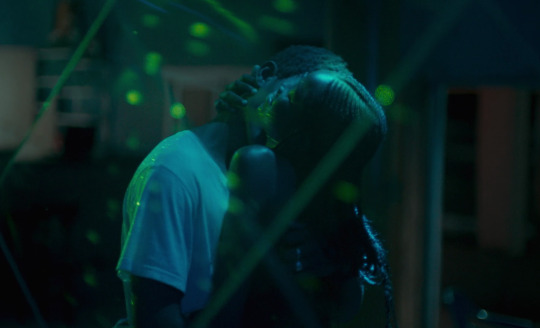
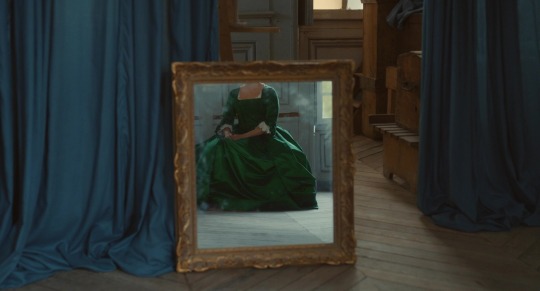
Claire Mathon, Atlantics / Portrait of a Lady on Fire
With Atlantics, Claire Mathon’s photography is hazy and meditative, featuring luminous shots of the Atlantic where the ocean is vast and violent, a kind of portal to another dimension. Stunning shots of mirrors, wind flowing through drapes, and silhouettes evoke the ghostliness of Diop’s vision. With Portrait, her images are painterly, again paying close attention to an unruly ocean, but even more to exquisitely framed shots of the female form through a distinctly feminine gaze- hands, cheeks, armpit hair. Superlative work twice over.
NOMINEES:
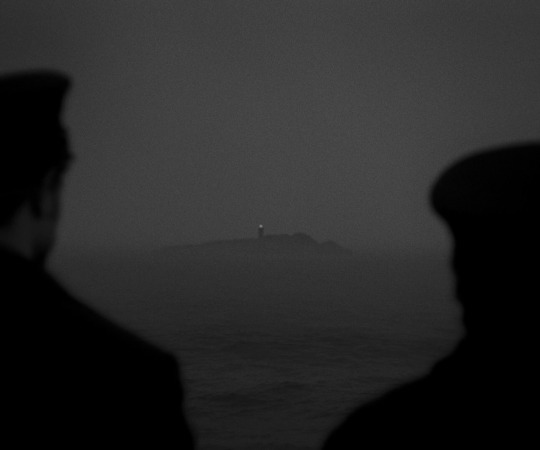
Jarin Blaschke, The Lighthouse
Misty, washed out black and white photography packed into a tight aspect ratio to keep things claustrophobic, featuring stunning contrast of lights and darks and inspired use of closeup to hone in on the horror of this cabin fever two-hander where every shot is frame-worthy.

Benoît Debie, Climax
Boldly colorful, wild photography that drastically switches gears in each of its acts, from tight, still, posed shots in our introductions to the dancers, to that meandering and swirling single tracking shot that takes us through the meat of this jukebox freakout, proving once again Debie is at his best when collaborating with Noé.
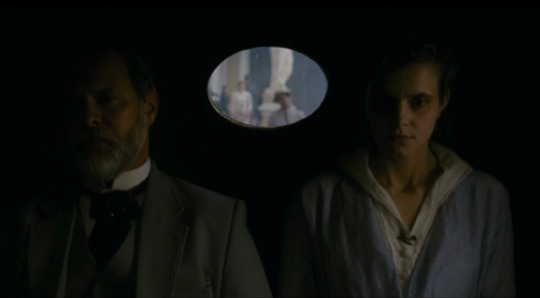
Mátyás Erdély, Sunset
Erdély takes the same toolkit of his stunning work on Son of Saul and makes another film with it, this time perhaps even more impressively, playing with the contrast of dark, oppressive interiors and the blinding light of the Hungarian summer, finding even more stunning, propulsive images in his favored shallow focus to make this claustrophobic thriller sing.
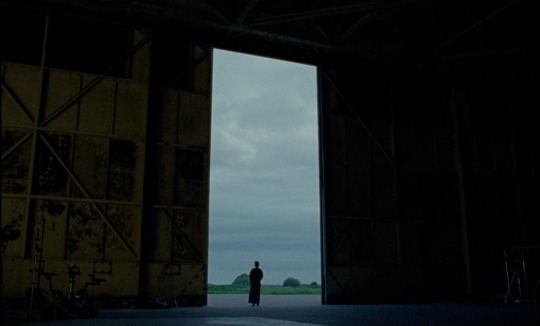
David Raedeker, The Souvenir
Exquisitely, unconventionally framed shots, often coming at them from an angle, from below, or obscured through a mirror or a window, mostly working within a palette of grays and pale blues, though it memorably employs red when we (spoiler alert) learn of Anthony’s death, though this washed out color story never feels flat but is instead rich with life, with the intangibility of memory.
#2019 Film Awards#Best Cinematography#Claire Mathon#Atlantics#Portrait of a Lady on Fire#jarin blaschke#The Lighthouse#Benoît Debie#Clmx#Mátyás Erdély#Sunset#David Raedeker#The Souvenir
21 notes
·
View notes
Text
The Nest
Story: Nachdem die Familie die Zuflucht ihrer sicheren amerikanischen Vorstadt verlassen haben, stürzt sie in die Verzweiflung eines archaischen 80er Jahre-Britannien und ihr unbezahlbares neues Leben in einem englischen Herrenhaus droht die Familie zu zerstören. Während die unheimliche Isolation des Hauses die Familie weiter auseinander treibt, gerät jeder Mensch in einen selbstzerstörerischen…

View On WordPress
#Adeel Akhtar#Amy Jackson#Andrew Lowe#Carrie Coon#Charlie Shotwell#Christina Piovesan#Demütigung#Derrin Schlesinger#Drama#Familie#Familiendrama#Jude Law#Langeweile#Mátyás Erdély#Michael Culkin#Oberschicht#Oona Roche#Richard Reed Parry#Sean Durkin#Sundance
0 notes
Photo

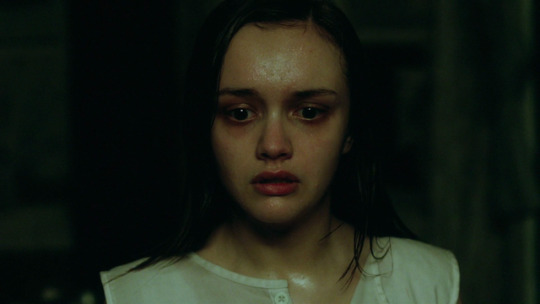
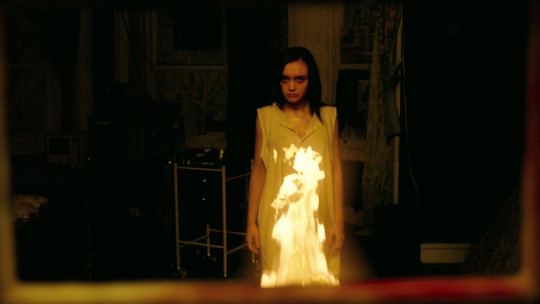
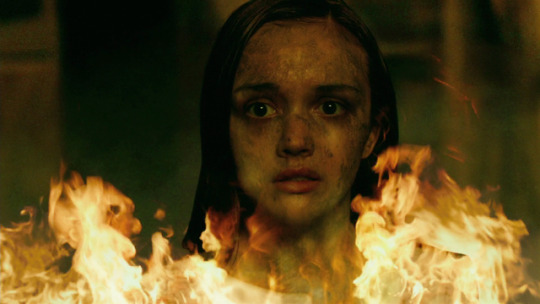
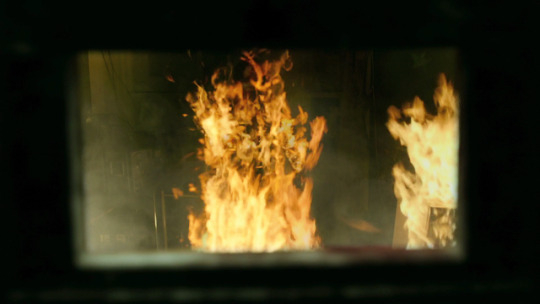

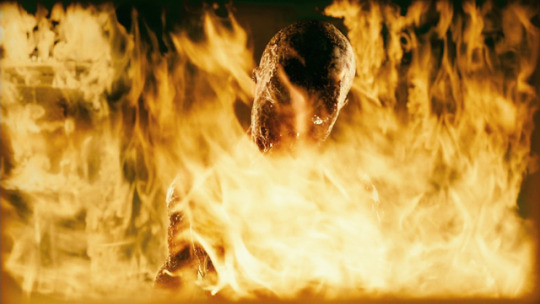
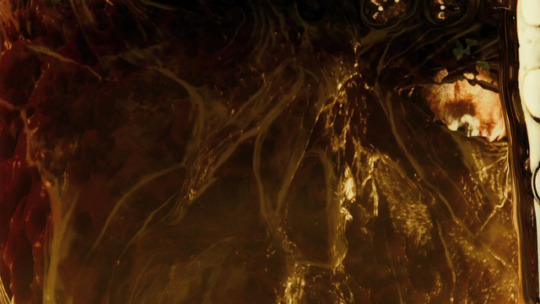
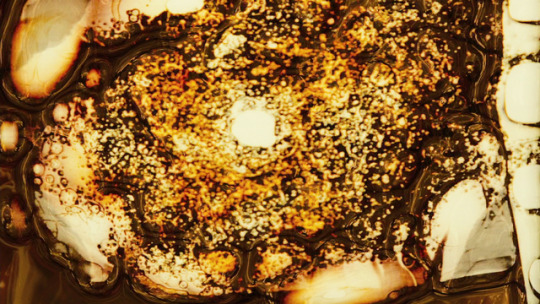

The Quiet Ones (John Pogue, 2014).
#the quiet ones (2014)#john pogue#mátyás erdély#glenn garland#matt gant#the quiet ones#el estigma del mal#el estigma del mal (2014)#olivia cooke#sesión de madrugada#sesiondemadrugada#movie stills#movie frames
73 notes
·
View notes
Photo
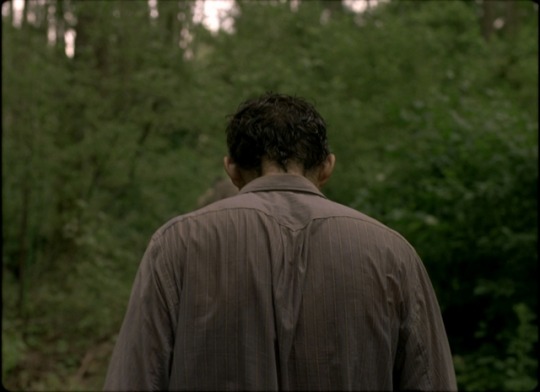
Saul fia (2015) / Cinematography by Mátyás Erdély
#Saul fia#son of saul#2015#film#movie#cinema#cinematography#Mátyás Erdély#László Nemes#Géza Röhrig#the scene session
3 notes
·
View notes
Photo
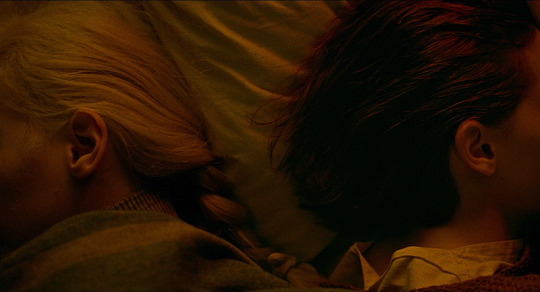


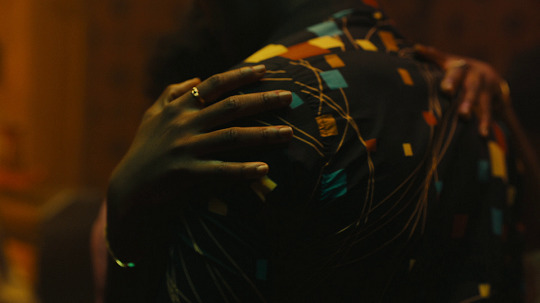
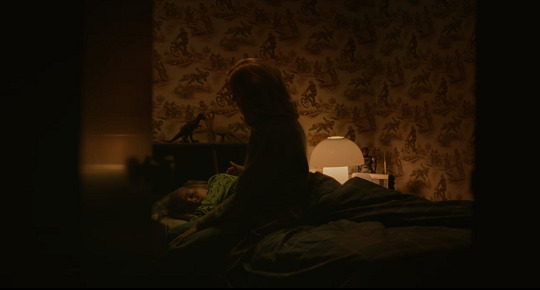

Best Cinematography 2020
Winner:
Beanpole - Kseniya Sereda
Nominees:
First Cow - Christopher Blauvelt Gretel & Hansel - Galo Olivares Lovers Rock - Shabier Kirchner The Nest - Mátyás Erdély Nomadland - Joshua James Richards
12 notes
·
View notes